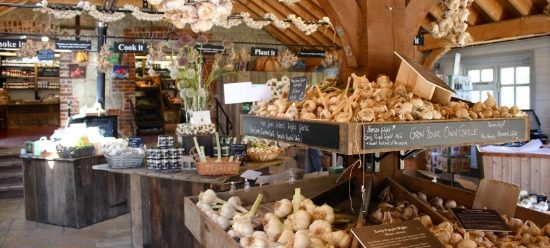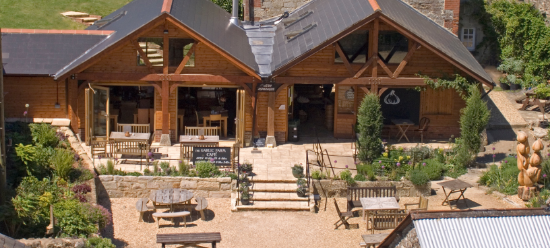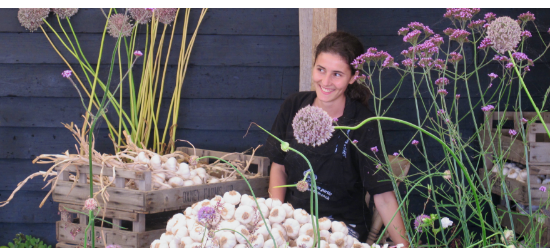
The Purées
The Garlic Farm's Garlic Purée and new Black Garlic Purée make cooking with garlic easier than ever. There's no peeling or chopping involved, making garlic purée a quick and convenient choice when time is of the essence. Both flavours are ideal for squeezing into marinades, mayonnaise, dips, sauces, stews, flavoured butters, bread, and even cake batters (see our Chocolate Guinness cake with Black Garlic ganache recipe or use in chocolate brownies).
Cooking tips
- Because the garlic in this form is so fine, it cooks much quicker than chopped, crushed or sliced garlic, so add it later in your cooking than you might usually, to avoid burning the garlic. You may find the flavour is more intense because of this reduction in cooking time.
- Experiment with both types of puree: sometimes a dash of the sweeter Black Garlic Puree added to the regular garlic puree is just the flavour combination a dish needs.
- Black Garlic is full of naturally occurring umami, which boosts the flavour of any dish - sweet or savoury.
- Stir two teaspoons of Black Garlic Purée through Bolognese sauce to add richness.
- Garnish scrambled eggs with a dash of Black Garlic Purée
- Stir a teaspoon of either garlic puree, along with a knob of butter, through any steamed green vegetables
- Add generous amounts of Black Garlic Purée or Garlic Purée whenever marinading meat or vegetables prior to cooking.
Recipe suggestion
There are so many ways to use garlic purée that there's not enough space in this blog to list them all. But one great recipe to try is homemade garlic breadcrumbs (Pangrattato), which you can then use to add texture and flavour to all kinds of dishes - try sprinkling over salads, soup, baked fish fillets, risotto and pasta. In some parts of Italy, Pangrattato is known as "the poor man's Parmesan" because it would be scattered over spaghetti in place of cheese. It's also dairy-free, making Pangrattato a useful option for vegans looking to add a tasty finishing touch to dishes.
GARLIC PANGRATTATO
Ingredients
- 180g slightly stale bread such as sourdough or ciabatta, roughly chopped
- 60 ml olive oil
- Salt and black pepper
- 2 tablespoons black garlic puree
- 1 tablespoon garlic puree
- Zest of 1 lemon
Method
- Blitz the chopped bread into coarse crumbs in a food processor. You could also put chopped cubes of bread into a sealed plastic bag, and use a rolling pin to crush them into smaller pieces.
- Heat the olive oil in a large pan, such as a wok, over a medium-high heat.
- Add the coarse breadcrumbs, along with a generous sprinkling of sea-salt - this will help the breadcrumbs crisp up, as well as maximising flavour.Use a wooden spoon or spatula to keep the breadcrumb pieces moving as they cook, so that they toast and colour evenly. This will take around five-ten minutes.
- Finally squeeze in both garlic purées, and combine with the crumbs so that the garlic is evenly dispersed.
- Once the breadcrumbs have turned a suitably golden hue, turn the heat off and let the Pangrattato cool in the pan. Grate the lemon zest over the breadcrumbs, season with freshly ground black pepper, and mix together well.
- Store in a sealed jar for up to three weeks, and use liberally!






















